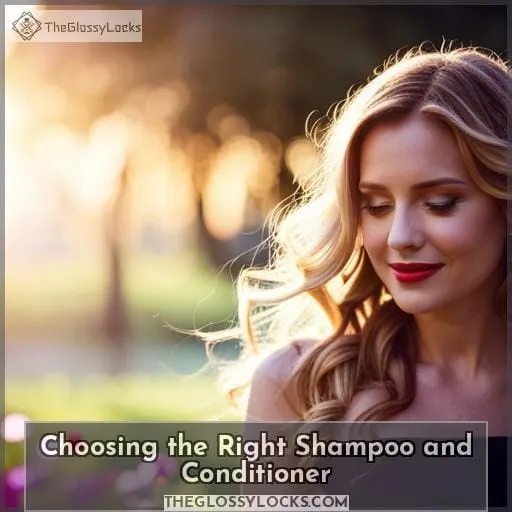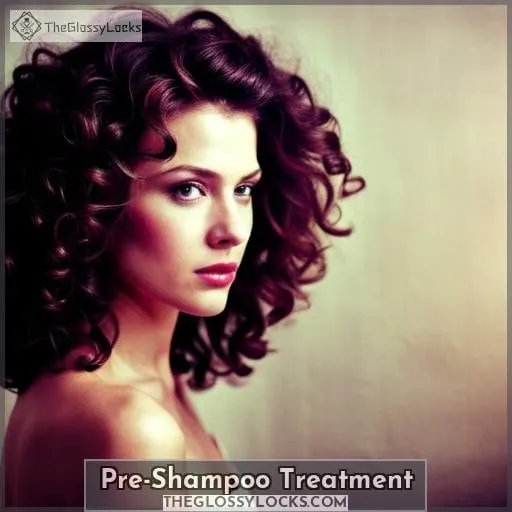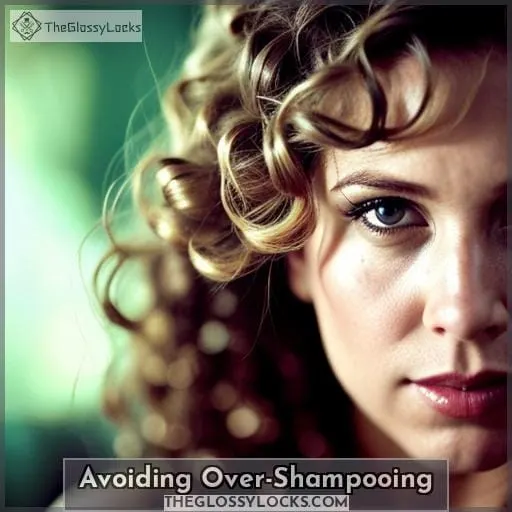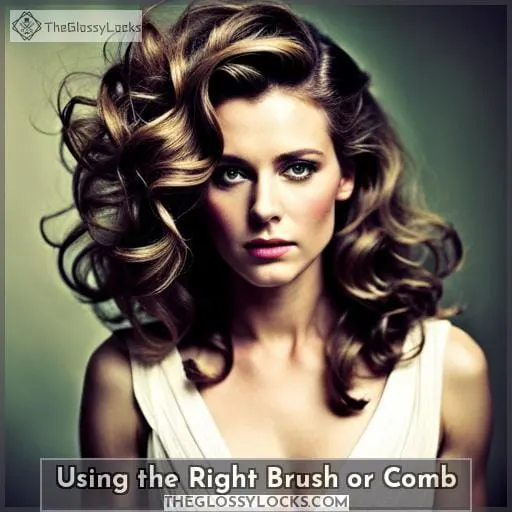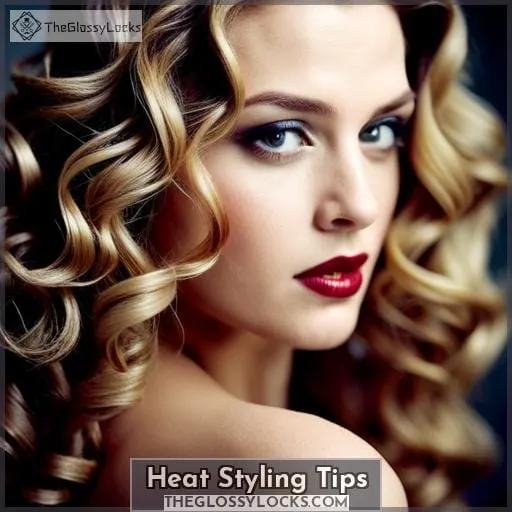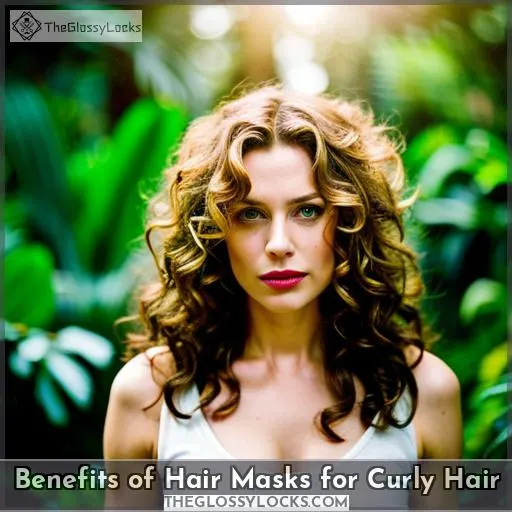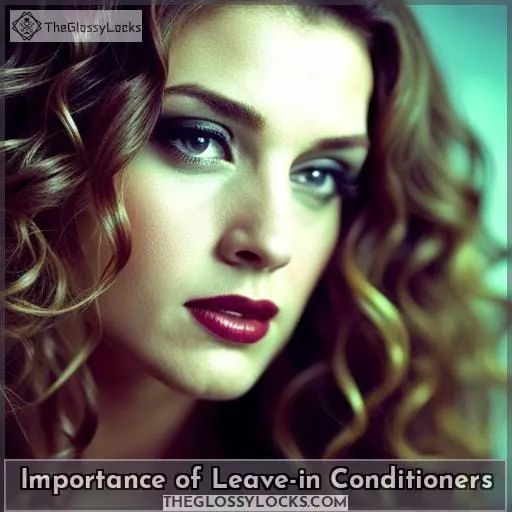This site is supported by our readers. We may earn a commission, at no cost to you, if you purchase through links.
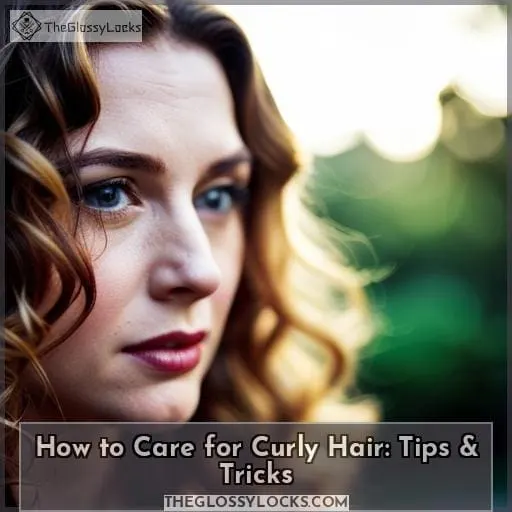 Are you ready to revolutionize the way you care for your curly hair? With the right knowledge and techniques, it isn’t hard to have bouncy locks that are full of life. The key is understanding how best to take care of your curls in order to keep them looking their healthiest.
Are you ready to revolutionize the way you care for your curly hair? With the right knowledge and techniques, it isn’t hard to have bouncy locks that are full of life. The key is understanding how best to take care of your curls in order to keep them looking their healthiest.
From pre-shampoo treatments all the way down through choosing a shampoo and conditioner, here’s a guide on everything you need to know about taking good care of naturally curly hair.
First things first: how do we make sure our strands get enough moisture? It starts with selecting sulfate-free shampoos as well as conditioners that can help replenish lost hydration levels by adding beneficial ingredients like essential oils or plant extracts back into hair follicles.
Additionally, try using deep conditioning masks or hot oil treatments before washing so there’s an extra layer of protection against dryness when rinsing out the product with water – just be careful not to use too hot because this could damage delicate curls!
Table Of Contents
Key Takeaways
- Prioritize moisture for healthy, bouncy curls.
- Choose sulfate-free shampoos and moisturizing conditioners.
- Adjust water temperature for rinsing based on porosity.
- Embrace leave-in conditioners for added hydration, frizz control, and protection.
Choosing the Right Shampoo and Conditioner
If you want to take care of your curly hair, choosing the right shampoo and conditioner is key. Sulfate-free shampoos are best for curly hair, as they don’t strip away natural moisture like harsher options can.
Sulfate-free shampoo options
For healthy and defined curls, opt for a sulfate-free shampoo to keep your hair hydrated and protected! Consider shampoos with natural oils like coconut or olive oil, aloe vera, keratin, and shea butter.
Avoid harsh chemicals such as silicones and parabens that can strip away moisture.
Identify the curl type of your hair texture for product selection. Lightweight products work best on low porosity hair, while heavier ones are suitable for high porosity.
- Choose shampoos with natural oils like coconut or olive oil, aloe vera, keratin, and shea butter.
- Avoid harsh chemicals such as silicones and parabens that can strip away moisture.
- Identify your curl type for product selection. Lightweight products work best on low porosity hair, while heavier ones are suitable for high porosity.
- Selecting the right sulfate-free shampoo will help fight dryness and frizz without compromising the overall health of your curly locks!
Moisture-boosting conditioners
Transform your curls with moisture-boosting conditioners that nourish and protect! Natural oils like coconut, olive, and castor are perfect for hydration techniques. Curl definition is achieved through leave-in conditioners, while frizz control can be attained with keratin-based products.
Depending on hair porosity (low or high), choose lightweight or heavier curly hair types of products respectively. Conditioner for curly hair should include natural ingredients such as aloe vera, shea butter, and other essential oils to restore lost moisture from heat styling.
Product selection for curl type
Identify your curl type and hair texture to select the right products for you. A good starting point is analyzing product compatibility with your curl classification, ingredient analysis, and texture assessment.
To keep curls healthy and balanced, it’s important to choose a shampoo that won’t strip natural moisture or weigh down locks. Look for brands specifically designed for curly hair as they’re more likely to contain nourishing ingredients like oils, aloe vera gel, or shea butter.
These provide much-needed hydration while softening the strands without leaving them greasy or limp.
When styling curls at home, consider leave-in conditioners instead of heavy gels.
Pre-Shampoo Treatment
Consider using pre-shampoo treatments like hair masks or conditioning oils to restore moisture and nourish your curls. Hair masks are great for hydrating dry, brittle curls and providing deep conditioning benefits.
For best results, apply the mask after shampooing but before conditioner to allow better absorption of the moisturizing ingredients.
If you don’t have a hair mask, you can try using natural oils such as coconut oil or olive oil instead. These oils offer similar hydrating effects without any added chemicals. When applying either type of product, be sure to pay special attention to detangling techniques to prevent strands from becoming tangled and causing breakage later on when styling your hair.
Choose an appropriate conditioner with hydrating ingredients like shea butter or aloe vera for maximum effectiveness in protecting your curly locks against frizziness and damage from environmental stressors such as sun exposure or heat styling tools.
To further protect your curls, consider using preventive measures overnight. Wrap your head with silk scarves, ponytails, or buns to provide extra protection while you sleep, helping your curls retain their shape throughout the night.
Lastly, follow the application tips recommended on the product packaging carefully. Improper usage can result in lackluster results, regardless of how expensive the product may be. This includes avoiding direct contact between the product and your scalp skin, as it can cause drying out and disrupt your entire curly hair routine.
Hot or Cold Water?
When washing your curls, the water temperature is key. Hot or cold? This choice can have an effect on how well your hair takes in moisture and retains it.
For low porosity curly hair types, opt for a cool rinse with lukewarm water to help close the cuticle layer of each strand and retain its natural oils. Colder temperatures also encourage definition without frizziness while helping to reduce breakage from heat styling tools like blow dryers or flat irons.
On the other hand, high porosity strands may benefit from warm rinses as they open up their cuticles allowing more hydration into each strand which helps prevent further damage caused by environmental stressors such as wind or sun exposure.
To maximize moisture retention when showering use pre-shampoo treatments like conditioning oils followed by diluted shampoo before detangling with a wide-toothed comb then finish off with cooler rinses for best results!
When heat styling, always make sure you are using products designed specifically for curly tresses that contain natural ingredients such as shea butter and keratin along with lightweight leave-in conditioners to keep those locks looking healthy all year round!
Avoiding Over-Shampooing
To keep your curls healthy, avoid over-shampooing and opt for gentle cleansing practices instead. Start by using a mild shampoo that’s sulfate-free and dilute it with water to help retain natural moisture.
Additionally, make sure to use a wide-toothed comb to detangle your hair before washing so you don’t cause damage when brushing wet curls. Limit the number of times you shampoo each week – once or twice should be sufficient depending on how oily or dry your scalp is.
When selecting products, look out for natural ingredients like aloe vera, shea butter, or keratin. These will provide extra nourishment without stripping away essential oils from the hair shafts. Also, take into account whether you have low porosity (lightweight) or high porosity (heavier) curly hair.
This will help you choose an appropriate product range that works best for your curl pattern.
Lastly, remember not to rinse conditioner off too quickly, but also ensure it’s fully removed to avoid interfering with styling products afterwards.
For weekly maintenance, follow these steps:
- Use cold water rinses
- Trim split ends every 6–8 weeks
- Pineapple bun sleep routines
- Embrace and care gently using moisturizing techniques plus detangling methods and steaming techniques, etc.
- Utilize lightweight or heavyweight leave-ins based on porosity levels and product ingredients like coconut oil, jojoba oil, honey hair masks, etc.
- Lastly, minimize touching those beautiful locks!
Using the Right Brush or Comb
For perfect curls, use a wide-toothed comb or brush to gently detangle your hair without risking damage. When selecting the right tool for brushing and styling curly hair, it is essential as it can make all the difference in preventing breakage and frizziness.
A wide-tooth comb is ideal for removing tangles without pulling on strands of curl. Start from the ends of your hair and work up towards your scalp. If you have thick curls that need more control while being styled, you may also opt for a boar bristle brush.
Avoid any brushes with metal bristles or balls at their tips as they are too harsh on delicate curls.
When brushing curly hair, always remember to be gentle. Never tug at knots or force them out. Instead, take small sections one by one so that each tangle comes out easily with minimal effort involved. Additionally, apply heat protectant before blow drying or using hot tools like curling irons to maintain healthy locks even after styling sessions.
Always keep an eye out for split ends too. These should be trimmed every 6-8 weeks to preserve length and prevent further damage down the line. Following these simple steps will ensure happy days ahead filled with beautiful bouncy ringlets.
Heat Styling Tips
Limit heat styling to keep your curls healthy and looking their best. Use heat protectants to provide a barrier between the hair and styling tools. For special occasions, you can use curling irons, flat irons, or curling wands sparingly.
- Blow drying techniques: Use cool air only on damp hair with a diffuser attachment when necessary.
- Curling Iron/Wand: Always use low or medium heat settings for better control over curl shape and size. Avoid direct contact with the scalp by keeping it at least 2 inches away from the roots.
- Flat Irons: Select ceramic plates instead of metal ones. Use even strokes starting at the nape of the neck until the desired look is achieved.
- Messy Buns & French Twists: Create these hairstyles using bobby pins that won’t tug too hard on delicate strands while still holding them in place securely throughout the day without slipping out easily!
Overall, remember to take extra care when using any kind of heating tool as they can quickly damage curly locks due to their fragile texture. Always be aware of what you’re doing before proceeding into something new, no matter how tempting it may seem.
This way, there will never be any regrets down the line once everything is said and done.
Preventing Split Ends
Now that you’ve learned how to heat style your curls, it’s time to focus on preventing split ends. Split ends are caused by the weakening of hair strands due to excessive styling and lack of proper care.
The best way to prevent this is through regular trims every 6-8 weeks. Trimming techniques such as dusting or point cutting can help keep split ends at bay while also maintaining curl shape and length retention.
In addition, use a heat protectant when using hot tools for additional protection against damage from high temperatures.
You should also incorporate a good sleep routine into your curly hair care regimen as well. Opt for silk pillowcases (or satin) rather than cotton so they don’t absorb moisture from the scalp overnight, causing frizz.
Lastly, don’t forget about natural oils like jojoba, sweet almond, argan, and grapeseed.
Benefits of Hair Masks for Curly Hair
If you have curly hair, it’s important to know the benefits of using a hair mask. Not only do they help keep curls hydrated and bouncy, but they also reduce frizz and provide an extra layer of protection for your locks.
Nourishes and hydrates curls
Treat your curls to a nourishing hair mask for an extra layer of hydration and softness, like sinking into a warm bath. For best results, use curl-friendly oils such as coconut or argan oil with natural ingredients like honey or avocado for maximum moisture.
Hydrate your locks overnight by incorporating nighttime care techniques such as the pineapple bun method and silk pillowcases to reduce frizz while you sleep.
Improve styling tips by using lightweight products on low porosity hair and heavier ones on high porosity strands for optimal hydration levels throughout each day.
With these simple yet effective techniques, you’ll have healthy-looking curly locks in no time!
Enhances curl definition
Try using a curl-defining product to further boost your curls’ shape and texture. Hair masks are the way to go, as they can help nourish, moisturize, and define curls. Look for ingredients such as avocado oil, honey, or shea butter, which will provide essential nutrients that enhance shine and body while keeping hair hydrated by locking in moisture.
Consider applying this type of mask at night before bedtime so it has ample time to soak into your strands.
With these simple yet effective tips combined with regular use of hair masks tailored towards curly textures, you’ll be sure to achieve more defined-looking locks in no time!
Reduces frizz and breakage
By incorporating a hair mask into your routine, you can help reduce frizz and breakage for smoother, healthier curls. For best results, use heat-protectant products before heat styling and opt for silk pillowcases while sleeping.
Consider detangling techniques such as using a wide-tooth comb or finger detangling to minimize breakage. Also, try Frizz Control Hair Masks that contain natural oils like olive oil or shea butter to tame the mane! Finally, don’t forget about nighttime hair care with pre-shampoo treatments like masks or conditioning oils.
Importance of Leave-in Conditioners
Curly hair needs special attention and care to look its best, and leave-in conditioners are an important part of a proper curly hair care routine. Leave-in conditioners provide added hydration, help define curls, reduce frizziness, and protect against heat damage.
When choosing the right product for your curly locks, consider what type of curl you have as well as your porosity level. This will help determine which ingredients will work best for you. Look out for natural oils like coconut or argan oil in the ingredients list since these can offer excellent nourishment to dry strands without weighing them down too much.
Other beneficial elements include keratin proteins, shea butter, aloe vera gel, etc. It’s also important to avoid sulfates, silicones, alcohols, parabens, harsh chemicals, fragrances, etc.
To apply leave-in conditioner correctly, start with freshly shampooed damp but not overly wet hair. Then, section it into four parts starting from the forehead at the back, then two sides. Divide each one into sections about 2 inches wide. Comb through lightly and spray directly onto strands, concentrating more near the ends.
Distribute evenly throughout all sections and use fingers or a wide-tooth comb to ensure even coverage.
The effects on hydration should be immediate after application, while long-term results depend largely upon consistency. Applying regularly helps build up moisture reserves over time, protecting against breakage, split ends, and dull lifelessness.
When used consistently along with other healthy practices and products formulated specifically for curlies, plus regular trims and maintenance, it goes a long way towards keeping those spirals looking their very best.
Conclusion
Taking care of curly hair can be a challenge, but with the right knowledge and products, you can achieve beautiful, healthy curls. Approximately 65% of the population has curly hair, according to the American Academy of Dermatology.
When selecting a shampoo and conditioner, opt for sulfate-free and moisture-boosting products. Consider using pre-shampoo treatments like masks or conditioning oils. Rinse your hair with cold water to avoid frizz and breakage.
For overnight protection, follow a curly hair sleep routine. Create a pineapple bun and use silk or satin pillowcases. Embrace your curls and follow gentle hair care practices to maintain their health and definition.

